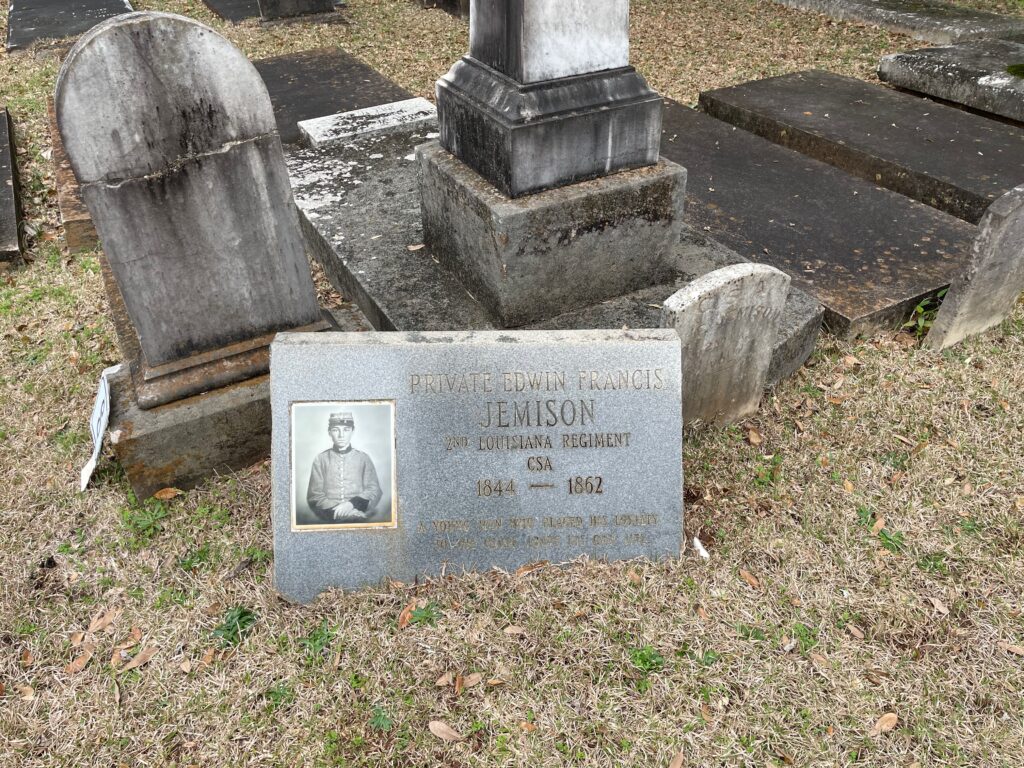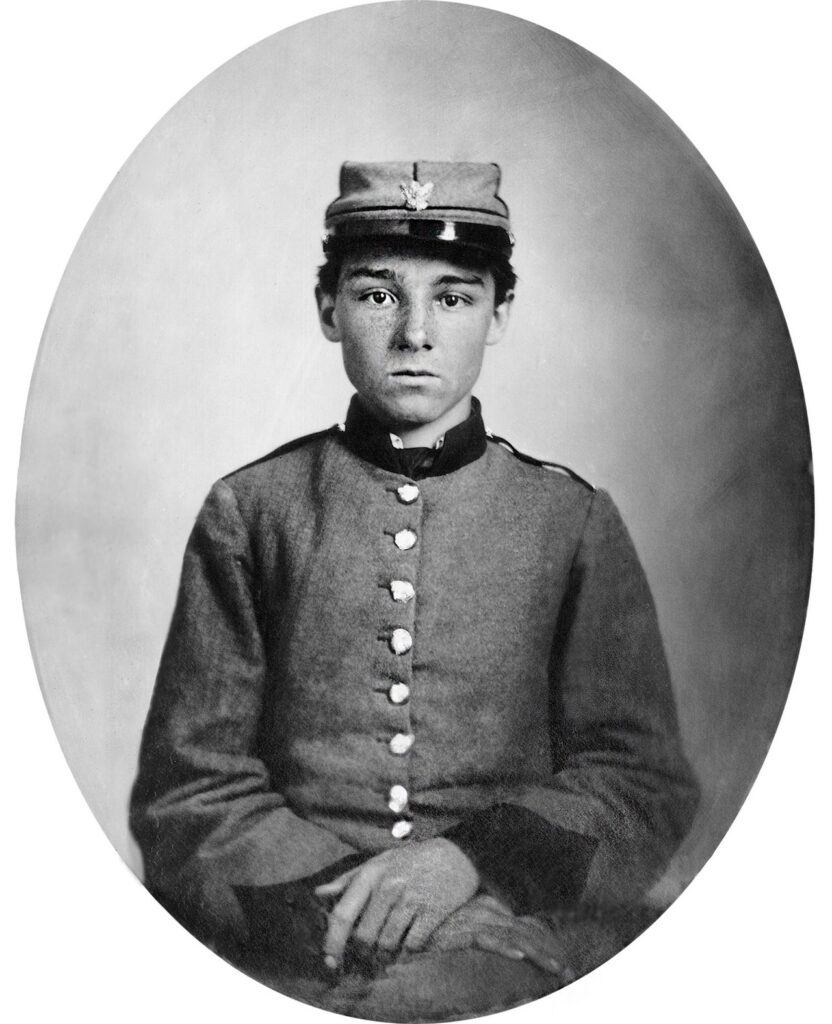Erik Visits an American Grave, Part 1,424
This is the grave of Edwin Jemison.

Born in 1844 in Milledgeville, Georgia, Jemison grew up in the slaveholding class. Like many southern slavers, the family invested in new lands and so he spent his teenage years on the new plantations outside of Monroe, Louisiana. He immediately joined the Treason military upon its treasonous defection in defense of slavery, even though he was only 16 years old, which made him pretty young for the time. Presumably, his family wholeheartedly supported this. Initially, he was on the staff of General John Magruder, probably due to his very young age and probably family connections too. But he became part of the 2nd Louisiana Infantry, a private in Company C. Then he got his head blown off at the Battle of Malvern Hill, on the Peninsular Campaign, in 1862. He was 17 years old.
The story of Jemison is just another story of the Civil War, one of the examples of the complete waste of life that war caused. The only reason he is known today–and the reason he was famous by the late 19th century–is that famous picture of him, a picture that came to symbolize the Civil War to many people. Let’s take a better look at it.

So it’s not that surprising a photo like this would become a critical piece of Civil War memory in the late nineteenth century. First, this kid might have been 17 but he looks 12. So what could better epitomize the waste of the war than this young faced lad. Moreover, he looks so determined. He’s so trying to be a grown up soldier. Who doesn’t think it is a waste for kids like this to die in a war!
But watch how that can play on our liberal hearts.
Because this image also did a ton of work in the late nineteenth century to depoliticize the war. By focusing on the youth and the waste, we can very easily forget that Jemison volunteered to keep Black people in slavery. This wasn’t some kid drafted later in the war. He was an active, enthusiastic volunteer. He knew what the war was about. Everyone in the South did. And he supported that. Sure, there were no doubt other reasons he volunteered too. The South was a militaristic and violent society and a lot of young men were excited to prove their manhood in war against those damned black loving Yankees.
Of course none of that was part of how this picture became central to Civil War memory. The late 19th century was the reconciliationist period of the war. Whites, north and south, were figuring out how to get back together as a nation and the best way to do that for many of them was to forget why the war was fought and remember the shared sacrifice, the shared bravery, the shared sadness of death. Sure, slavery was wrong, who would disagree with that in 1895? But wasn’t the South basically right about the darkies? Of course they were, or at least that was the core of northern white thought at that time. This was the period when the Republican Party was completely disassociating itself from its radical past, embracing nationalism and imperialism and the tariff. Sure, we might wave the bloody shirt at election time, but otherwise, can’t we all just get along?
So what images such as Jemison’s did was to erase the Black contribution to the war. It erased the politics from the war. It erased slavery and emancipation from the war. It erased Reconstruction from the aftermath, except as something to frame as a national shame of out of control Blacks harassing our white women (Birth of a Nation came out of a nation very ready to hear that story; it’s not as if Griffith created the idea). It allowed the nation to focus on what was lost among whites in ways that could bring the nation back together as a white supremacist enterprise. This was the core of the new romantic literature of the war, the erection of monuments to the war in cities around the nation, and the soldiers reunions that so excited the nation during these years.
We have to fight this racist memory, even if we want to say that it is sad that a kid like Jemison died. So yeah, I think we have to say that it is good Jemison had his head blown off. Because he was one more soldier ready to shoot and kill people trying to free slaves. He was one more soldier willing to do whatever it took to keep Blacks in a subservient role. He was one more southern white wanting to preserve the right to not only preserve the forced labor of Black Americans, but to torture, rape, and kill them at will.
Edwin Jemison is buried in Memory Hill Cemetery, Milledgeville, Georgia. It seems that he was one of the many soldiers brought back by the Daughters of the Confederacy and other memory groups in the years after the war because of course he was originally buried at Malvern Hill. However, no one is 100% sure that he is actually where he is claimed to be.
If you would like this series to visit more higher ranked soldiers who committed treason in defense of slavery, you can donate to cover the required expenses here. John Magruder unfortunately survived the war and is buried in Galveston, Texas. Meanwhile, Stonewall Jackson is in Lexington, Virginia and oh how I would like to visit that asshole. Previous posts in this series are archived here and here.


